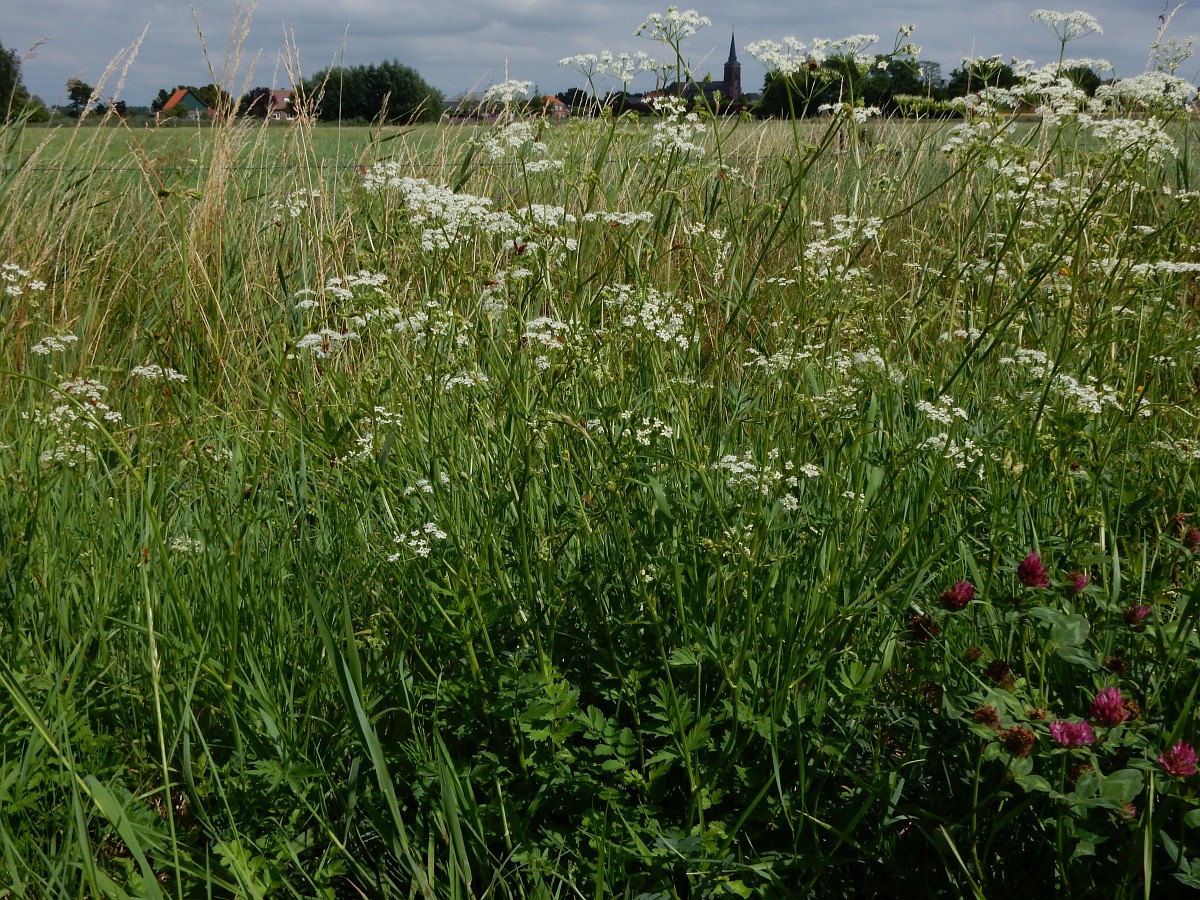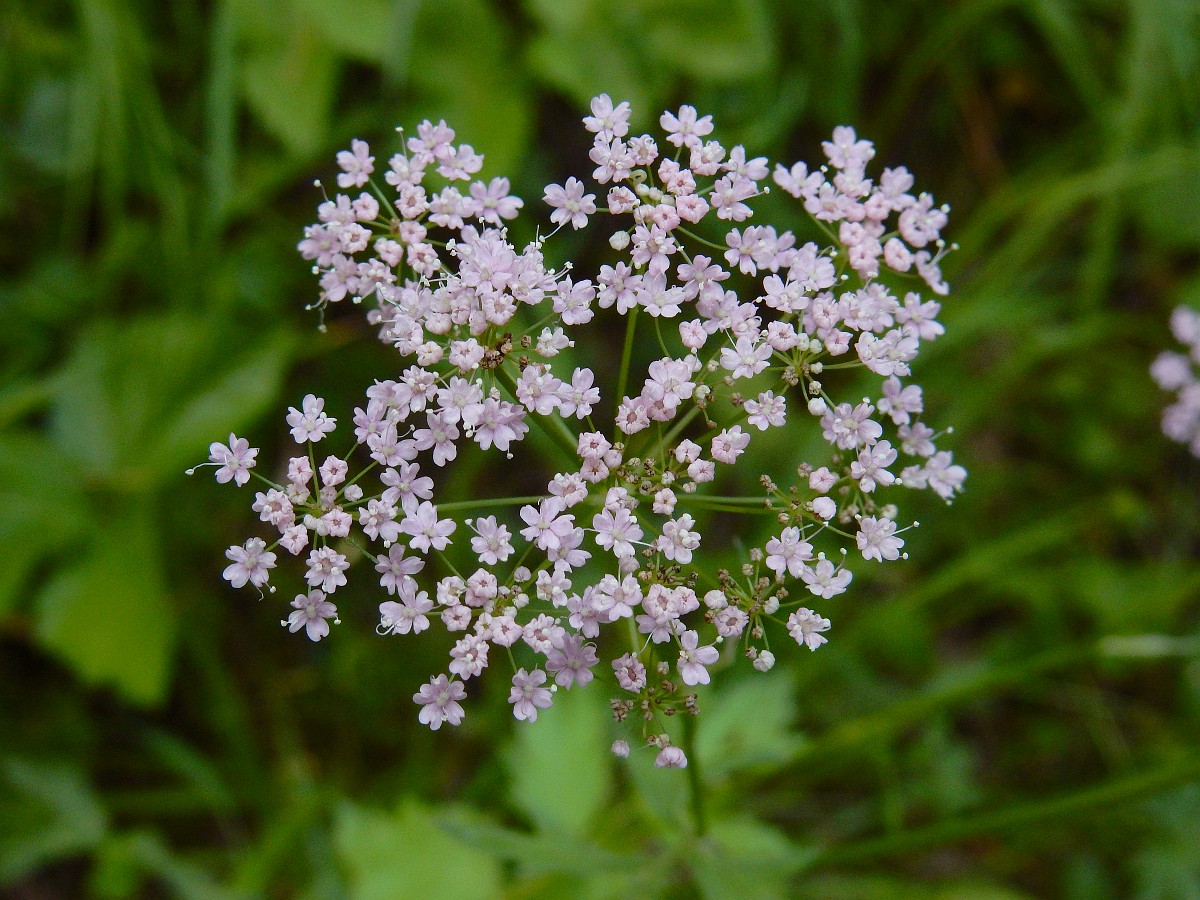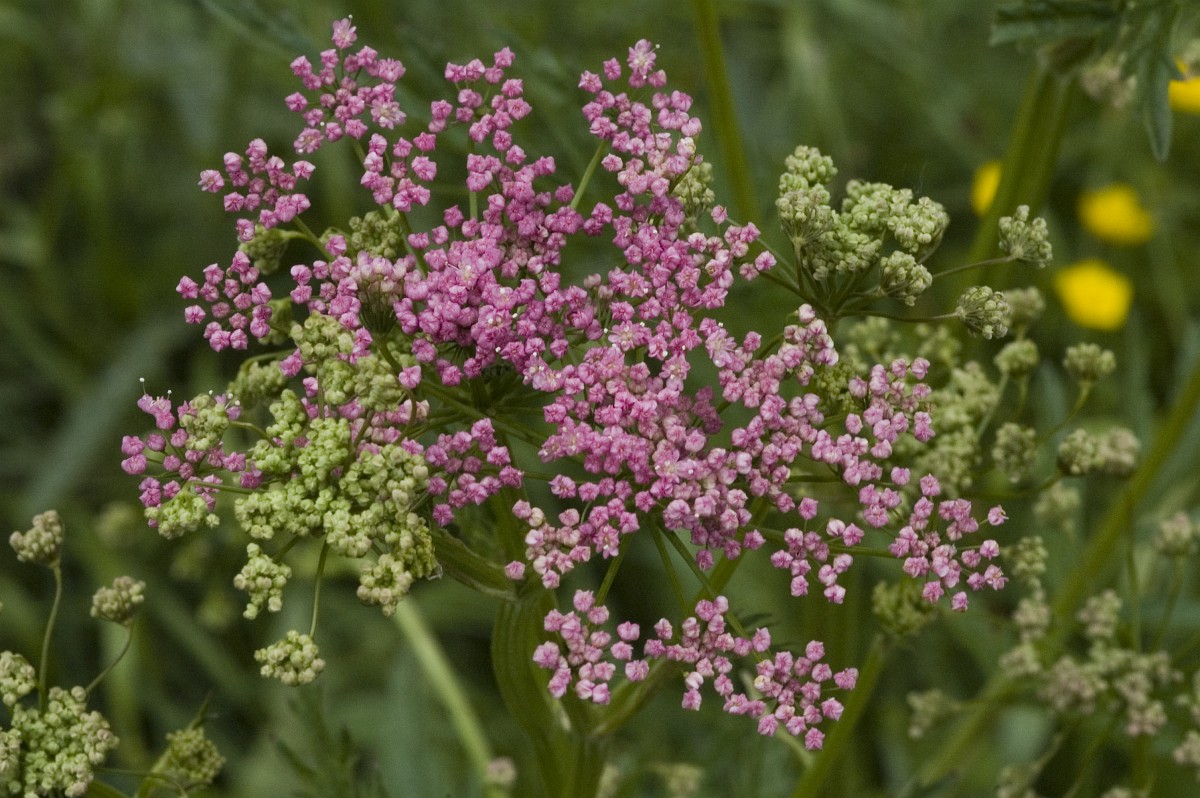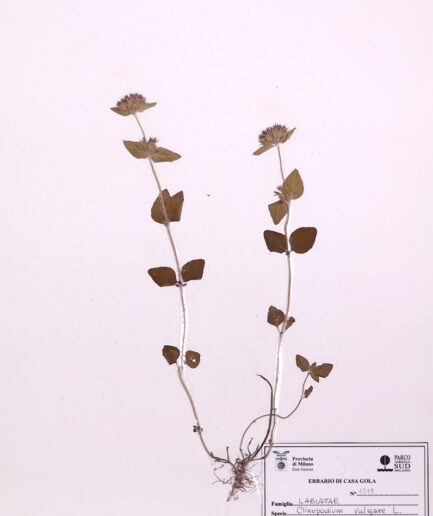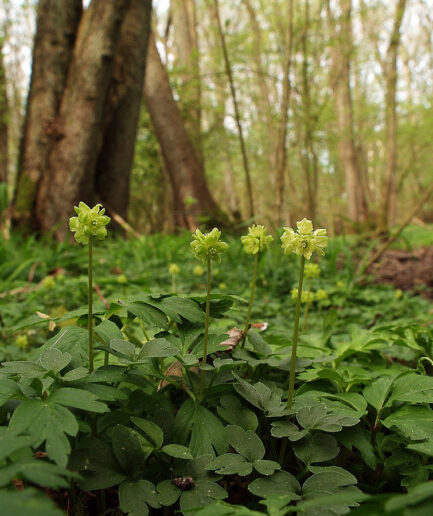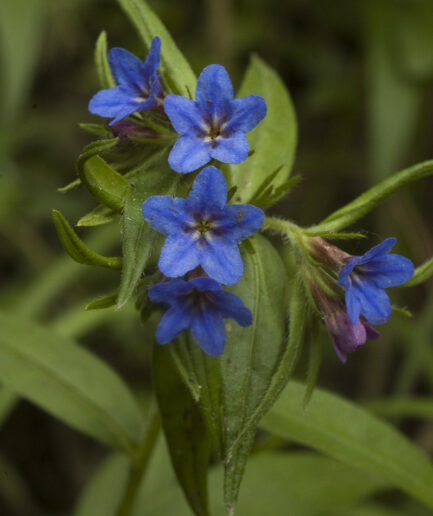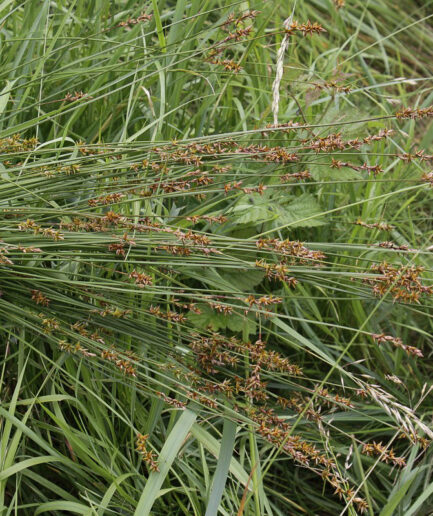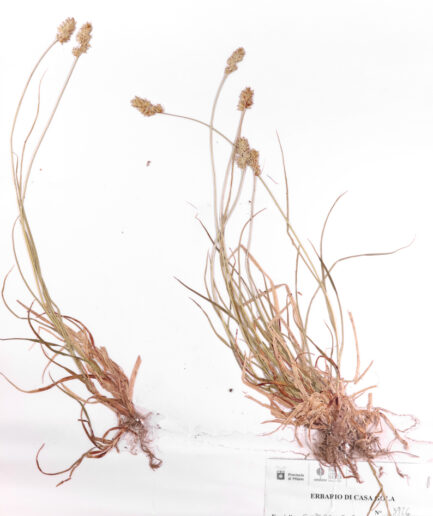Greater Burnet-saxifrage
Scientific Name: Pimpinella major (L.) Hudson
Family: Apiaceae
MORPHOLOGY
Habit and dimensions: A perennial herbaceous plant with a thin root emitting an unpleasant odor, reaching a height of 50-100 cm.
Stems: Erect, generally branched, hollow, grooved, and glabrous.
Leaves: The leaves vary in shape, being pinnate with 9-11 segments, each 3-7 cm long, oval, deeply toothed. Lower leaves have petioles, while cauline leaves have lanceolate segments, and upper leaves are divided into triangular lobes.
Flowers: The umbel, pendulous before flowering, consists of 11-13 unequal rays; Involucre and involucres are absent, rarely appearing temporary and soon deciduous bracts. The flowers, mostly hermaphroditic, are white or pinkish, with calyces bearing inconspicuous teeth, petals with rounded or slightly notched apices. It blooms from May to August.
Fruits and seeds: The fruits are ovoid, with a prominent central rib, glabrous and without wings.
DISTRIBUTION AND HABITAT
Present throughout Italy except the major islands and Calabria. It grows in meadows and shrubby areas, from 0 to 2,300 m.
USE
It possesses expectorant, anti-inflammatory, slightly diuretic, and astringent properties. In folk medicine, it is used for gargles and mouthwashes in cases of oral and throat diseases, for digestive disorders, and especially as a mucolytic and expectorant. Before taking any plant-based product (medicinal or non-medicinal) for therapeutic or similar purposes, it is always advisable to consult your doctor beforehand. The essential oil is used as a flavoring agent in candies and liqueurs.
Photo: under the free license of Saxifraga and Peter Meininger, Ed Stikvoort, Marijke Verhagen


